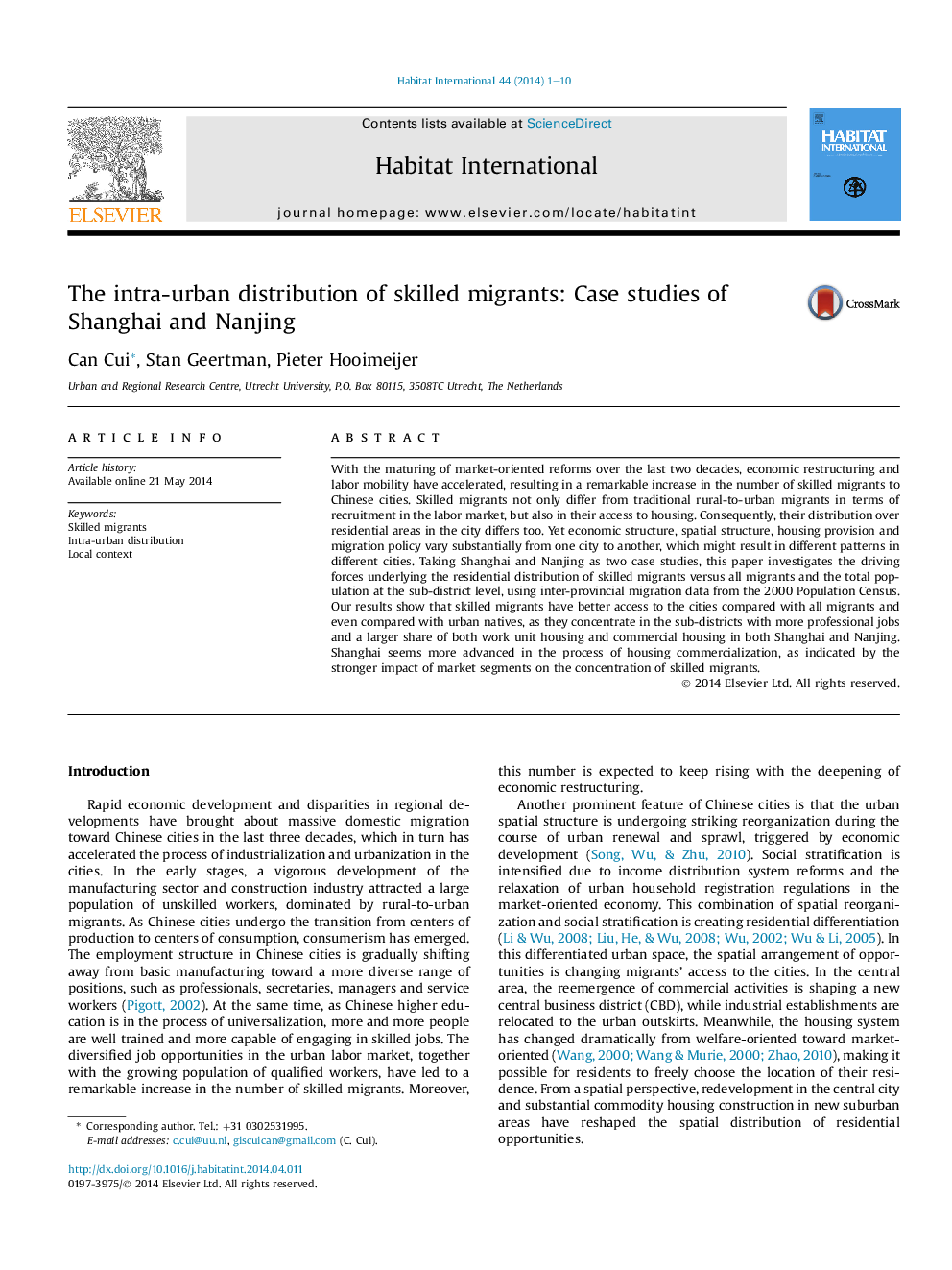| Article ID | Journal | Published Year | Pages | File Type |
|---|---|---|---|---|
| 1047746 | Habitat International | 2014 | 10 Pages |
•The spatial patterns of skilled migrants are different in Shanghai and Nanjing.•Superior position of skilled migrants leads to advantageous spatial distribution.•Market factors in Shanghai are vital in explaining skilled migrants' distribution.•Whereas, institutional factors in Nanjing are relatively important.
With the maturing of market-oriented reforms over the last two decades, economic restructuring and labor mobility have accelerated, resulting in a remarkable increase in the number of skilled migrants to Chinese cities. Skilled migrants not only differ from traditional rural-to-urban migrants in terms of recruitment in the labor market, but also in their access to housing. Consequently, their distribution over residential areas in the city differs too. Yet economic structure, spatial structure, housing provision and migration policy vary substantially from one city to another, which might result in different patterns in different cities. Taking Shanghai and Nanjing as two case studies, this paper investigates the driving forces underlying the residential distribution of skilled migrants versus all migrants and the total population at the sub-district level, using inter-provincial migration data from the 2000 Population Census. Our results show that skilled migrants have better access to the cities compared with all migrants and even compared with urban natives, as they concentrate in the sub-districts with more professional jobs and a larger share of both work unit housing and commercial housing in both Shanghai and Nanjing. Shanghai seems more advanced in the process of housing commercialization, as indicated by the stronger impact of market segments on the concentration of skilled migrants.
